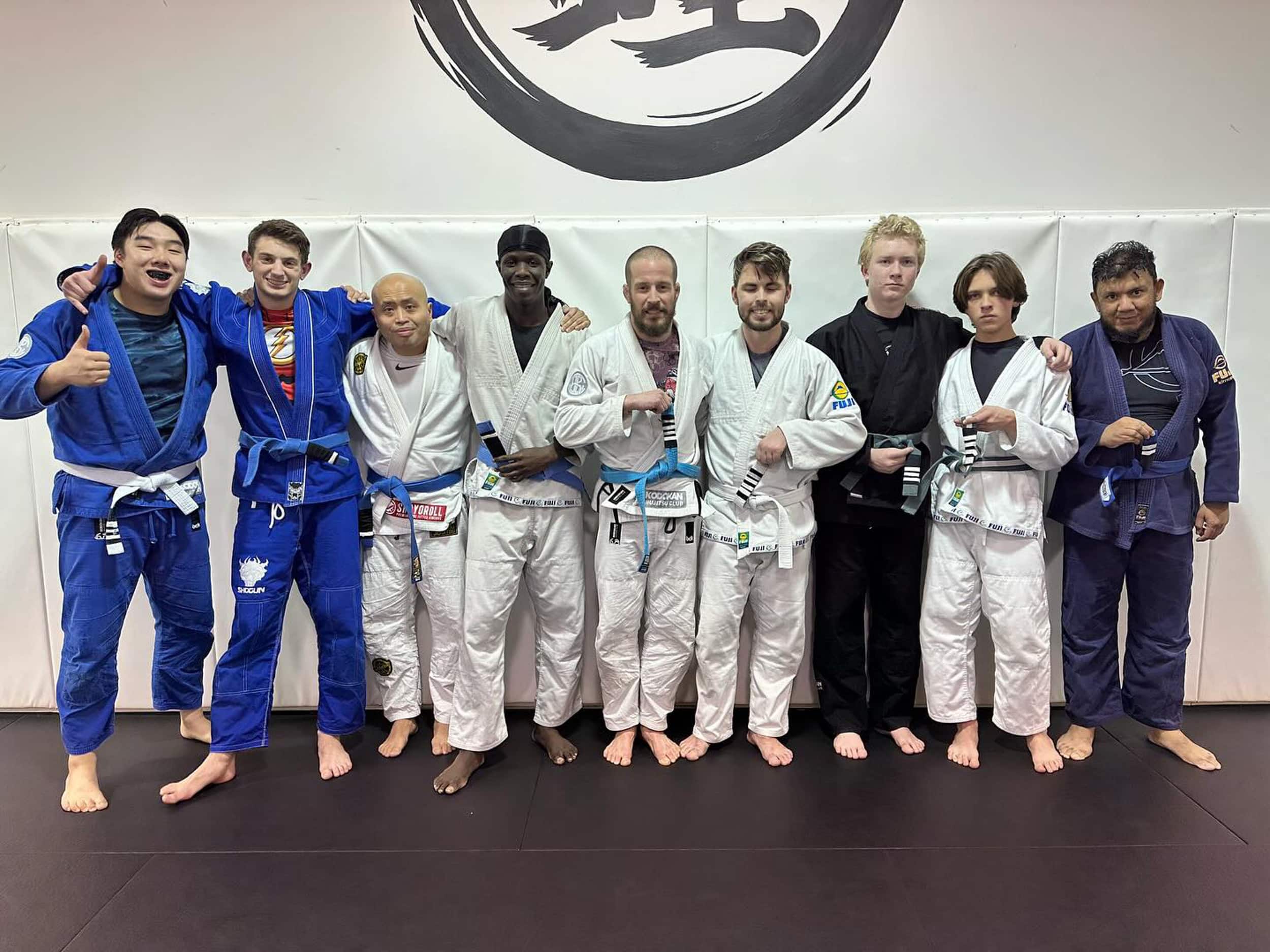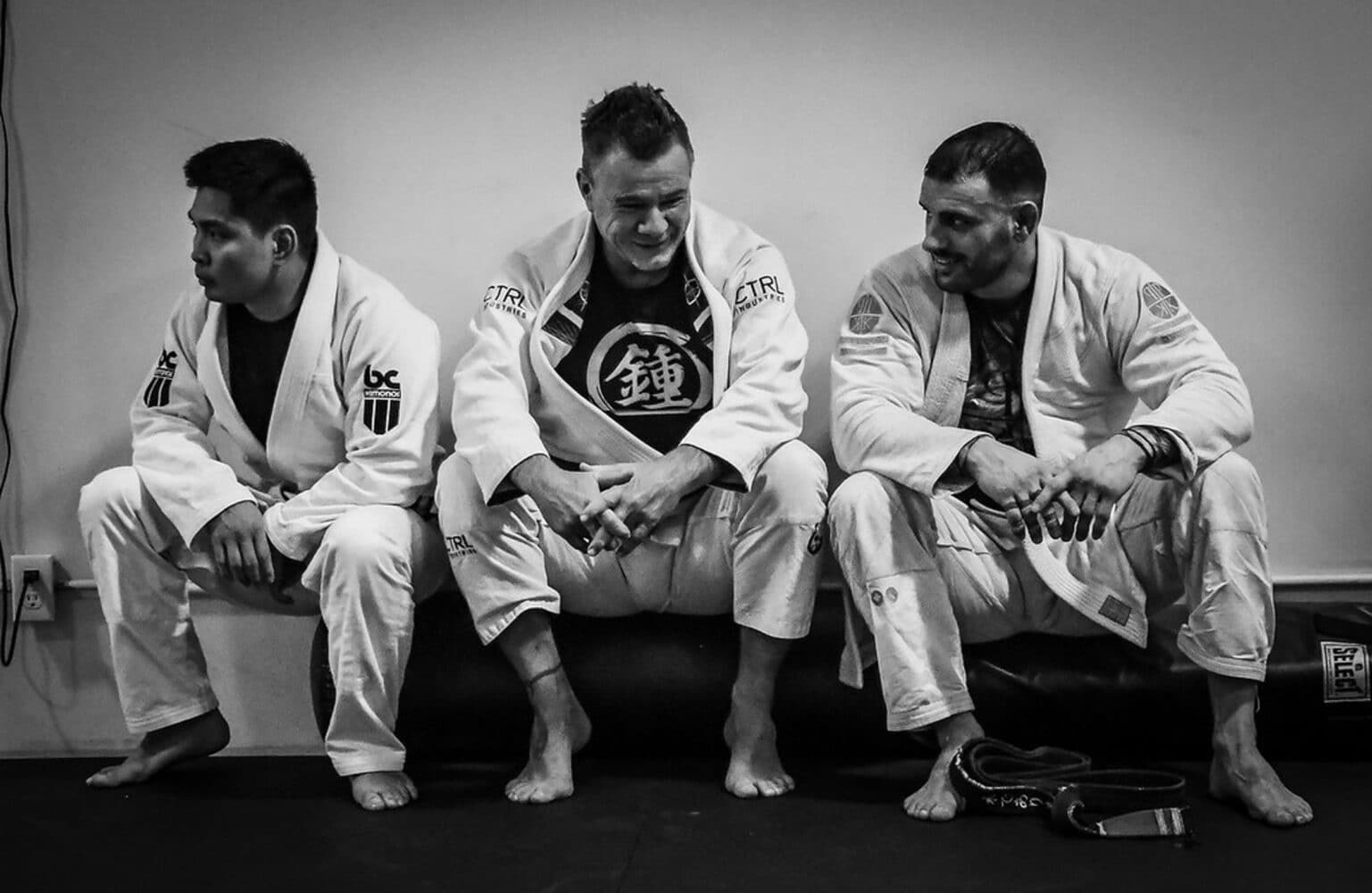Fear & loathing in Jiu-jitsu: One of the hardest things about Jiu-jitsu is facing fears that come with the sport.
There are different kinds of fears we can have. Beginners might fear being too out of shape to start. Those further along might fear they are not good enough, or the hard training and physical demands of the sport.
Later on, students may fear rolling with higher belts, fear putting their best effort forward, or fear competing. Academy owners might fear that their business and investment will not be successful.
The different kinds of fears Jiu-jitsu practitioners can experience are only limited by the imagination, and they are likely to be constant and evolve over time. How then should we understand and deal with these fears? Below are five insights into the nature of fear and the practice of Jiu-jitsu that can help us progress on our Jiu-jitsu journey.
1. Fear is normal
One important to thing to understand is that to have fear is to be human. We are born confused and afraid. We have to learn everything from breathing, to eating, to crawling then walking, to speaking. Even going to the bathroom is something we have to learn.
We are completely dependent on our caregivers in our infancy. Without their care we could not survive. In such a state, it is normal to be afraid. Our biological reality dictates fear is bound to be one of the most basic and visceral human emotions that is hard-wired into us.
Not only is fear normal, but from an evolutionary perspective it is important to understand that fear historically served a useful purpose. Homo Sapiens have only been around for about sixty thousand years. Before this our biological ancestors were arboreal simians, hanging around in trees, eating fruits, and otherwise monkeying around.
Importantly, for the bulk of history humans have been nomadic hunters and gatherers, surviving by moving around and living off the land.
During this time a“flight or fight” instinct that immediately responded to perceived threats through either avoidance or confrontation likely served a useful purpose as hesitation could lead to death and eventual extinction of the species.
2. Fear can be your enemy
Life during prehistoric times was “short, nasty, and brutish”. It is important to understand that with the agricultural revolution about ten thousand years ago, in Mesopotamia and other fertile areas, life became much easier.
Practically all of human innovation and technology as well as a population explosion sprung from the agricultural revolution. It was the ability to farm that allowed humans to congregate in large numbers in one location and survive. With humans able to live in one area, this led to the specialization of labor and much of human innovation subsequently.
From an evolutionary perspective humans for most of human history, from about sixty thousand years ago to about ten thousand years ago we have been travelling in small groups and developing a “a flight or flight” response that we well suited to adaptation and survival. For only a small portion of human history humans begin to live in large communities.
The result is that we are bombarded with many more stressors than we historically were, and the flight or flight response that we have historically developed and used is no longer suitable for modern living.
What is necessary in the modern age is to be able to stay calm and think through problems, however our brains still want to respond with a flight or fight instinct. A repeated flight or fight instinct in modern contexts leads toa number of problems including, stress, anxiety, avoidance, paralysis, and excuse making.
3. Fear can be your ally
In the modern age where we are continually exposed to human interactions and stressors and where we can seldom react with a “flight or fight” instinct, our previous emotional reactions become maladaptive. We cannot fight our boss if he gives us more work, or run out of our office. Similarly we can not “freeze up” or make excuses.
Because we don’t know how to deal with modern problems with old tools modern many people live less than full lives. This is why so many people are at home sitting on their couches instead of trying Jiu-jitsu. They are literally too afraid to try.
This is another way of saying they are literally too afraid of being afraid. But without fear how are we to progress? We cannot hope to improve ourselves by avoiding difficult situations or freezing up when things are challenging and then making excuses.
Understanding that it is important to develop a HEALTHY relationship with fear rather than avoiding or paralyzing during difficult situations is one of the greatest leaps we can make as human beings and as Jiu-jitsu practitioners. In this context one of the best quotes about turning fear into an alley rather than an enemy comes from the Mendes brothers, who are recognized as world class jujiteiros:
“You must understand fear so you can manipulate it. Fear is like fire. You can make it work for you; it can warm you in the winter, cook your food when you’re hungry, give you light when you’re in the dark and produce energy. Let it go out of control, and it can hurt you even kill you… Fear is a friend of exceptional people.”
Rather than flight or flight, avoidance of or paralysis in the face of fearful situations, or what is necessary is to make fear into a friend. This is another way of saying that it is coexistence and growth within fear that is necessary.
4. Fear is subtle
A natural question that comes up is that if the flight or fight reflex as a response is built into our brains, should this not assist us in combat situations like Jiu-jitsu? To think this way is to misunderstand the fundamental nature of Jiu-jitsu. Jiu-jitsu is not fighting with brute force but a calculated combat system that is well thought out and has evolved with time, study, and discipline.
In other words, Jiu-jitsu involves thinking and problem solving and staying calm in the face of fear. And not mere brute force such as is involved in a flight or flight response. If we use brute force in Jiu-jitsu instead of proper technique we quickly get tired. If we get tired we slow down, and if we slow down we lose.
Rather than a flight or response Jiu-jitsu teaches us to remain calm in the face of adversity. And to think and problem solve. This is the exact type of response that is necessary in a combat situation. As well as in modern stressful life where flight or flight or fear responses are maladaptive. It is important to understand that when we have fears in life and in Jiu-jitsu they will often masquerade as something other than fear.
For example if we stop training or do not put our best efforts forward in practice, we will often not understand that this is because we are afraid of losing. Or of trying to be the best versions of ourselves.
Instead we will make excuses such as Jiu-jitsu is too hard. Or we didn’t have enough time, or some other “out” that does not involve admitting that fear is at the heart of our problems. Excuses hide fears that need to be addressed to allow progress in life and in Jiu-jitsu.
5. Fear skills are transferable
If we are practicing Jiu-jitsu, the good news is we are slowly but surely becoming experts at facing, managing, and progressing within our fears. Already just by showing up to practice and engaging in a difficult combat sport regularly we are doing more to address fears than 95% of the population.
The result is that slowly with time we will get over our flight or flight reactions and our avoidance reactions. And our excuse behaviors, and understand that fear is normal, can be mastered, and even made into an ally. New and greater fears are always going to be with us. But if we face them rather than avoid them we get better and better at facing these new challenges.
A black belt in Jiu-jitsu is not someone who never feels fear. But someone who has a good relationship with fear. A black belt feels fear. But is able to stay calm and think through problems quickly, creatively, and effectively. A black belt fights with skill and thought. And avoid employing ineffective brute force or getting triggered into a flight or flight response. A black belt is afraid but not afraid to lose.
A black belt fears allowing fear to dominate him or her, through figh or flight. Avoidance, paralysis, stagnation, or excuse making. He or she does not let fear stop him or her from putting their best effort forward. A Jiu-jitsu practitioner who gets a better handle in fear will also be able to transfer their fear management skills to other areas of their life. And so lead a more relaxed, calm, and anxiety free life.
We should all strive to lead lives where we are not dominated by fear.
Fear & loathing in Jiu-jitsu Conclusion:
Fear is a normal part of life. We are born vulnerable confused and afraid. Throughout our evolutionary history fear has developed as an adaptive “fight or flight” strategy that helped is survive.
Unfortunately, modern life does not involve the same dangers as those of our ancestors, however our brains are still hard wired to perceive almost any stressor as a life-threatening event.
The pace of modern life dictates that a continuous panic responses leads to anxiety, burn out, avoidance, stagnation, and excuses.
Fear & loathing in Jiu-jitsu Takeaway:
Jiu-jitsu is the perfect martial art for learning to develop a healthy relationship with fear.
- Because it teaches us to maintain composure in difficult situations.
- Think and problem solve rather than “fight or flight”.
- And to not view every stressor as life threatening.

